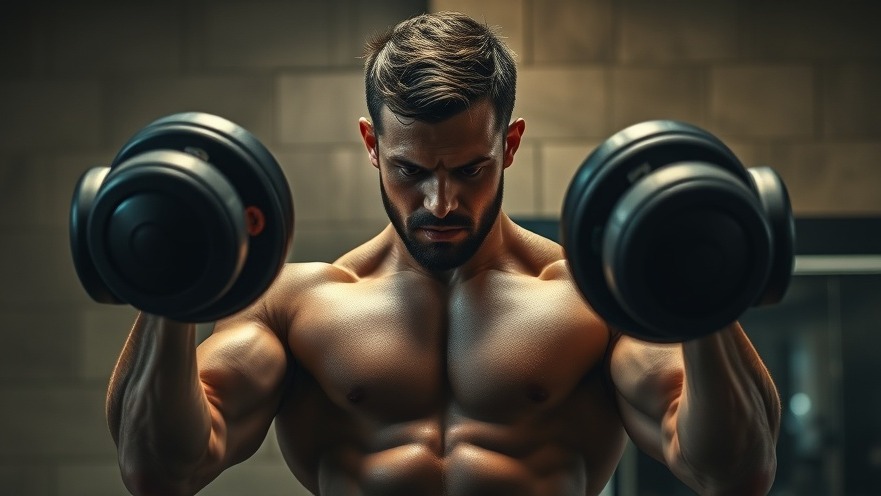
The Nuanced Relationship Between Nutrition and Exercise
When it comes to fitness and nutrition, particularly for women, understanding the right fuel and timing can be crucial for optimizing performance and overall health. In the enlightening video aired with Dr. Stacy Sims and Dr. Andrew Huberman, the conversation emphasizes the significance of tailored nutritional strategies that consider gender differences, especially under the weigh stations of intense physical activity.
In 'The Truth About Nutrition & Exercise for Women', experts Dr. Stacy Sims and Dr. Andrew Huberman dive into the essential nutritional guidelines for women, raising critical points about the relationship between diet and workout performance.
Small Pre-Workout Boosts: The Importance of Timing
In their discussion, the duo breaks down the details of pre-training meals, stressing that intense training doesn’t necessitate a full meal. Instead, a double espresso with a protein boost provides adequate energy to spark a workout without feeling overly weighed down. The science indicates that women especially benefit from a small dose of protein—approximately 15 grams—before engaging in strenuous activity. This small intake aids in metabolism and energy levels, fostering a more effective workout.
Post-Workout Protein: A Critical Component for Women
Dr. Sims points out that women in their reproductive years should aim for about 35 grams of protein within 45 minutes of completing resistance training, whereas those who are peri-menopausal may need as much as 40-60 grams. This intake is critical to recover from the strenuous activity and to promote muscle repair. Unfortunately, many women operate under the misconception that post-training nutrition isn't as crucial, while the reality, supported by research, reveals a narrower recovery window for women than for men.
Understanding Energy Needs: The 15 to 30 Calorie Rule
The dialogue also introduces an important distinction regarding energy needs. Dr. Huberman explains that the tipping point for endocrine dysfunction is significantly lower for women—30 calories per kilogram of fat-free mass compared to 15 for men. This understanding is essential for gym owners and trainers looking to customize intake recommendations for their female clients, making it clear why women's nutritional requirements can be more demanding.
Challenging Common Misconceptions
A prevailing myth is that fasted training leads to greater fat loss. However, both experts argue that training while fed yields equal results in fat loss when calories are appropriately managed. They emphasize that what matters most is the quality of nutrition rather than the quantities or the timing dictated by calorie counters. This perspective can ease the pressures of dietary restrictions and disordered eating patterns that many individuals face.
The Broader Implications of Nutrition on Workout Intensity
Body and brain functionality cannot be separated, especially regarding exercise performance. The video highlights how specific nutrients not only fuel physical exertion but also influence cognitive aspects like intensity and cortisol levels, allowing for a more favorable exercise experience. This insight serves as invaluable knowledge for trainers who guide their clients through the often emotionally and mentally taxing world of fitness.
Actionable Insights for Trainers and Fitness Enthusiasts
The key takeaway from this analysis is clear: trainers should not only create workout regimens but also educate their clients on nutrition and its impact on their fitness journeys. For a practical application, trainers might consider offering workshops or informational sessions focused on nutritional education, particularly geared towards women who often need more tailored dietary strategies.
Ultimately, providing nuanced insights into female nutrition and exercise can enhance clients' workout experiences and outcomes. Cultivating an environment where nutritional education is prioritized alongside physical training can help pave the way for healthier lifestyles and stronger relationships with food and exercise.
Conclusion: Empowering Women Through Knowledge
For gym owners and fitness trainers, incorporating these nutritional guidelines into their training programs could be a game-changer. By paving the way to a more informed and balanced approach to women's fitness, we can effectively empower them to manage their health and fitness better. As we contemplate the integral role nutrition plays in exercise, taking these insights into account could profoundly impact training effectiveness and enhance the overall well-being of female clients.
 Add Row
Add Row  Add
Add 




 Add Row
Add Row  Add
Add 

Write A Comment